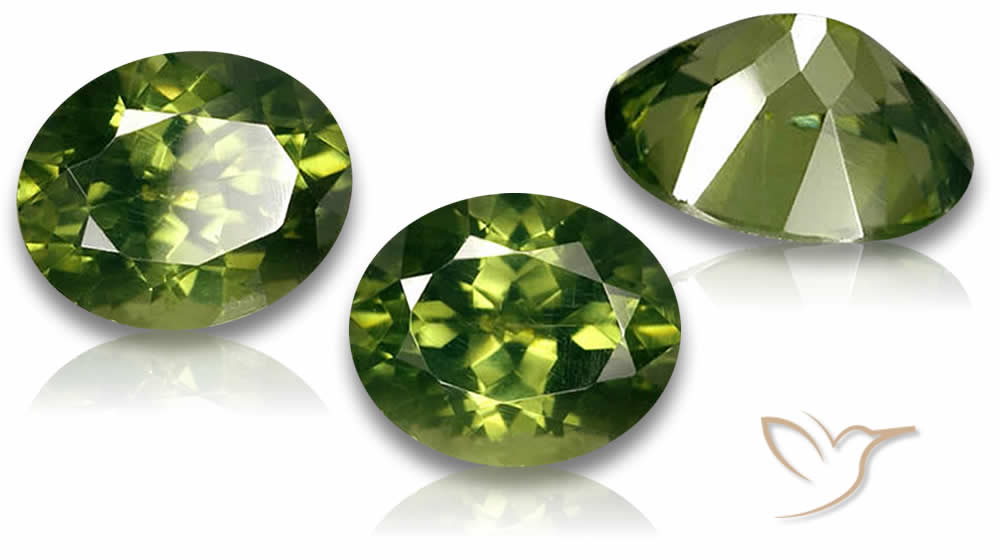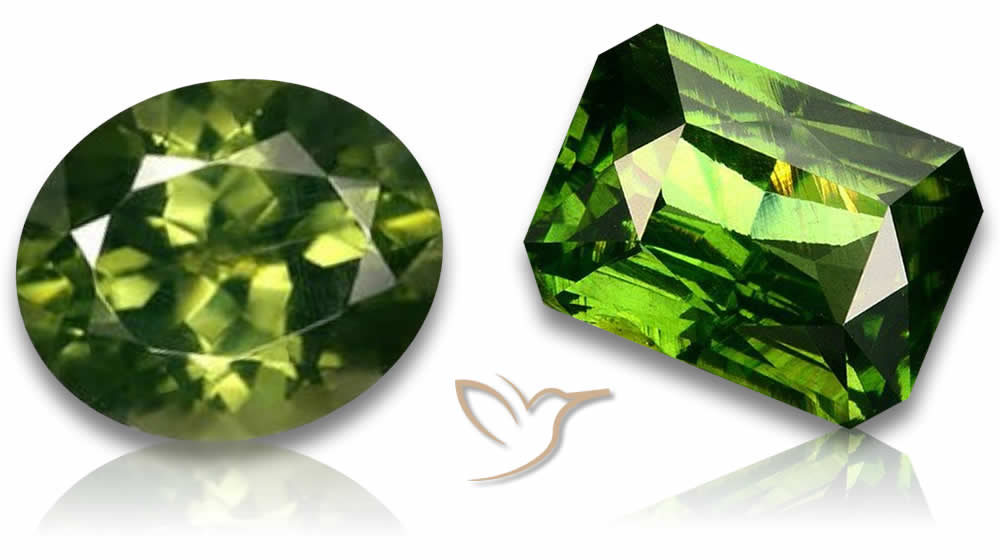Green Zircon Facts and Buying Guide | Gem Insights

Introduction
Green Zircon stands out as a gemstone appreciated for its unique green shade and sparkling shine. In this guide, we'll cover the essentials about this stone, from where it comes from and what it represents to smart buying advice and how to keep it looking great. This should help you decide if it's right for your next jewelry piece. For more detailed insights, explore our comprehensive zircon guide.
Key Takeaways:
- Green Zircon holds a special place in the world of jewelry.
- We'll break down its background, advantages, and what to think about when purchasing.
- It serves as a fresh, tough option compared to typical green stones.
- With the right upkeep, it keeps its impressive look for years.
- It's worth considering for anyone into jewelry or building a collection.
Properties of Green Zircon
Green Zircon features strong color, impressive sparkle, and solid strength, which makes it a smart pick for jewelry. Its green tones can shift a bit based on small elements inside, but the top ones have a clean, intense green with few flaws. Learn more about its unique characteristics in our zircon information page.
Hardness
Scoring 6.5 to 7.5 on the Mohs scale, it's tough enough for everyday items like rings or bracelets.
Refractive Index
With a refractive index of 1.810 to 2.024, it delivers a noticeable glitter that draws in gem fans.
Color Variations
You'll find shades from pale green to rich emerald-like tones, occasionally with yellow or brown hints. What sets it apart is its bright, even color compared to similar gems.
| Hardness Score | Refractive Index | Color Variations |
|---|---|---|
| 6.5 to 7.5 | 1.810 to 2.024 | Yellowish Green to Bluish Green |
Natural Green Zircon doesn't show up often, so many on the market get a heat treatment to boost color and clearness. Even so, they still shine brightly.
Symbolic and Metaphysical Meanings
Disclaimer: The healing and spiritual properties mentioned here draw from traditional beliefs and folklore. They are not backed by scientific evidence. For any health concerns, please consult a qualified medical professional.
Green Zircon ties into ideas of growth, plenty, and balance. Cultures in places like India, Egypt, and Greece once used it in rituals, linking it to insight and good fortune.
Healing Properties
Some folks turn to Green Zircon for help with emotional recovery and easing tension, aiming for a steady, peaceful feeling. It's seen as a sign of fresh starts.
Symbolic Meanings
Besides those ties, it's linked to wealth, fullness, and connecting with the natural world. That deep green color stands for life's revival, boosting self-assurance and fresh ideas.
Uses in Jewelry
Designers love Green Zircon for blending toughness with standout color. It works well in rings, necklaces, or earrings, giving a modern spin to timeless designs. If you've enjoyed Blue Zircon, this version brings a more earthy vibe to try out. Discover more about its versatile applications in our blue zircon guide.
Tips for Buying Green Zircon Jewelry
Bringing Green Zircon into your collection could be a solid choice, given its looks and sturdiness. Keep these pointers in mind for a smart buy. For in-depth purchasing advice, check our zircon buying guide.
Understand the 4 Cs
Like with any gem, focus on color, clarity, cut, and carat. Go for a lively green that catches your eye, with few spots and a cut that amps up the shine.
Consider the Setting
Opt for strong frames, especially protective ones if it's for regular wear.
Check for Authenticity
Stick with trusted sellers and get a certification to ensure it's the real deal.

Recognizing Fine Green Zircon
When checking out a piece, aim for deep, consistent color, clear insides, and a sharp cut. Bigger, untouched natural stones are a big deal for collectors.
Caring for Green Zircon Jewelry
It's pretty straightforward to look after. Use gentle soap and a soft brush for cleaning, and keep pieces apart to prevent dings. To keep it nice long-term, take it off before rough stuff.
Green Zircon vs. Other Green Gemstones
It stacks up well against favorites like emerald and peridot. Emerald brings that intense green and prestige, but Green Zircon costs less while matching in sparkle. Peridot is gentler and less shiny, so Green Zircon steps up for those wanting strength and flash.
Collecting Green Zircon
Collectors dig it for being scarce yet striking. For your set, seek out lightly treated ones with bold color and purity to hold value over time.
Conclusion
Hopefully, this rundown on Green Zircon gives you some solid info. With its appeal, toughness, and deeper meanings, it's a standout stone that fits nicely in any jewelry lineup.
Frequently Asked Questions
What is Green Zircon?
Green Zircon is a gemstone that belongs to the zircon family. It is known for its vibrant green color and exceptional brilliance. Green Zircon is often mistaken for other green gemstones like emerald due to its similar appearance. For more details, visit our zircon information page.
Where does Green Zircon come from?
Green Zircon is found in various locations worldwide, including Thailand, Cambodia, Brazil, and Sri Lanka. It typically forms in igneous and metamorphic rocks and is extracted through mining.
What are the benefits of Green Zircon?
Green Zircon is believed to offer benefits such as promoting emotional healing, enhancing creativity, and attracting abundance and prosperity. It is also thought to calm and balance the mind.
How can I use Green Zircon?
Green Zircon can be worn in rings, necklaces, earrings, and bracelets, or kept as a loose gemstone. It is also sometimes used in spiritual practices or meditation.
What are the properties of Green Zircon?
Green Zircon has a hardness of 6.5 to 7.5 on the Mohs scale and a high refractive index, giving it outstanding brilliance. Its colors range from light to deep green, sometimes with secondary undertones.
What does Green Zircon symbolize?
Green Zircon symbolizes growth, harmony, and vitality. It is associated with nature and is believed to bring luck and prosperity to its wearer.
How do I select high-quality Green Zircon jewelry?
Focus on vivid color, good clarity, precise cutting, and your preferred carat weight. Choose stones with minimal inclusions and consistent color for the best quality. Check our zircon buying guide for more tips.
How do I care for Green Zircon jewelry?
Clean Green Zircon with mild soap and warm water, and store it separately from harder stones to avoid scratches. Avoid harsh chemicals and sudden temperature changes.
Can I collect Green Zircon?
Yes. Green Zircon is a fascinating gemstone to collect, valued for its rarity, color, and natural brilliance. Collectors look for untreated, well-cut stones with excellent color saturation.

